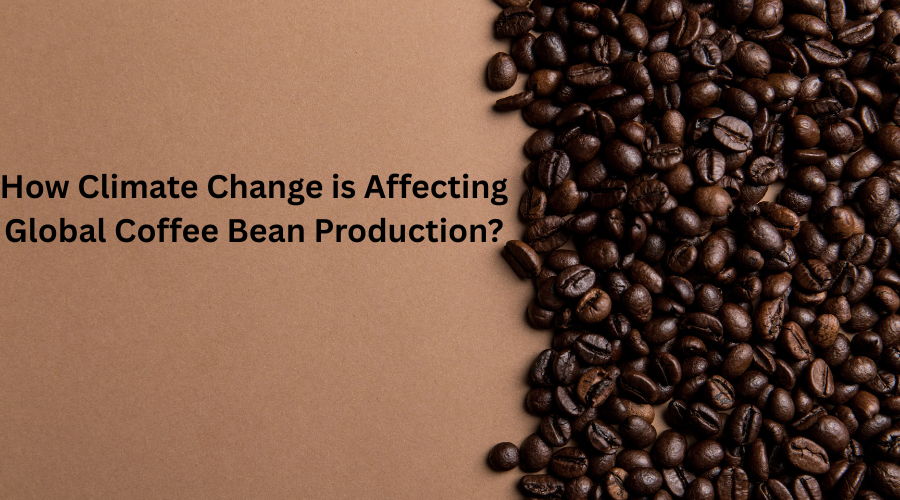
Coffee is a popular beverage in the world. Millions of individuals cannot go without a hot cup of coffee in the morning. But do you know that there are a lot of problems facing the coffee beans in your cup? Global warming is increasingly complicating the production of coffee beans, even among farmers.
The coffee plant is quite selective about where it grows. All that they need are good weather conditions, whether rain, and a specific temperature. Most coffee is grown in the exclusive coffee belt.
Coffee plants thrive in temperatures of 60 to 70 degrees Fahrenheit. They need plenty of rain but are not fond of much rain. It must be a fertile and well-drained soil. Even a slight change in these conditions harms coffee plants.
The rise in temperatures is causing major issues.
The biggest challenge for coffee farmers today is rising temperatures. Due to the increasing temperature on Earth, most coffee-producing regions are becoming unsuitable for coffee production. Coffee plants build up stress when the temperatures are above 75 degrees Fahrenheit, hence giving very few beans.
In such nations as Brazil, Ethiopia, and Colombia, the farmers are already observing their coffee plants getting stressed. Not all regions that once cultivated good coffee can grow good beans. The coffee cherries fail to mature slowly because of the heat, and this influences the taste of the end product.
There are certain times of the year when coffee plants require water. They require a wet season to grow in and a dry season to harvest.
Certain regions are receiving excess rainfall in areas that typically do not receive rainfall. This moisture promotes diseases and pests attacking coffee plants. Long dry spells are being experienced in other places, leading to wilting and killing of the plants.
There is an increasing length and severity of droughts in many of the coffee-growing regions. Coffee plants require healthy beans that can only be produced with an adequate supply of water. The plants become sickly and are more prone to illness.
Drought has caused entire crop losses among some farmers in Central America. They helplessly see their coffee plants dry up and cease to grow beans.
On the one hand, there are a few locations that are receiving excessive rain. Heavy rains carry away the fertile soil in which coffee trees need to grow. It also poses a more harmful situation of the spread of bad fungi and bacteria across the coffee plantations.
The rise in warmer conditions is aiding the spread of pests and diseases. Coffee-eating beetles, tiny insects, are currently found in places where they have never been before. The pest was restricted to specific areas, and with the rise in temperatures, it has gained an opportunity to move to new regions of coffee growth.
There is also a disease named coffee leaf rust that is spreading at an accelerated rate. It is a fungus that infects the leaves of the coffee plant and causes them to turn yellow and drop. The plants are unable to make food by photosynthesis on the leaves, which are not healthy, and they eventually perish.

In an attempt to avoid the increasing temperatures, several coffee farmers are attempting to cultivate their produce at altitudes above the ground. Mountains are more incredible, and the farmers are ambitious about getting the proper environmental conditions for their coffee plants up there.
Nonetheless, this is not the only solution. Mountain land can only go so far. Mountains are steep with fragile soil, making crop cultivation difficult. There are also forest resources in many mountain regions, and this too needs to be preserved instead of being cleared to be used as farms.
As large numbers of farmers migrate to the mountains, the scarcity of suitable mountain land for coffee plantations drives up the competition. It causes land prices to rise, and small growers face even greater challenges in finding inexpensive land to cultivate their crops.
Small coffee farmers are the worst victims of climate change. Such farmers lack the funds to purchase new equipment, relocate to new areas, or consider a more resistant variety of coffee. They rely entirely on their coffee crops.
When their coffee plants cannot cope with climate change, these farmers and their families will suffer significantly because of a lack of funds. A lot of them are driven away to leave coffee cultivation and seek alternative means of survival.
Climate change is reducing the supply of coffee, thus leading to an increase in coffee prices throughout the world. With a reduced supply of coffee beans and people demanding the same supply of coffee, the prices automatically rise. This means that, in the future, your breakfast coffee will probably cost extra.
Coffee farmers can be assisted in handling climate change with some simple things. Shade trees planted around coffee plants can shade them, protecting them from excessive weather. The trees are also useful in enhancing soil and accommodating birds that feed on harmful insects.
Applying mulch to coffee plants can ensure that the soil is moist during dry periods. During wet seasons, farmers can also harvest rainwater when the season is dry in order to use it.
Climate change presents a danger to coffee-growing worldwide. Unless precautionary steps are taken, coffee can get very costly and also a scarce resource.
Nevertheless, coffee growers, researchers, and coffee companies are closely working to address the issues. We can preserve our favorite morning drink, sustainable coffee cultivation, and buy coffee made by companies that help farmers transition to climate change.
Is coffee going to be extinct due to climate change?
No, coffee is not going to vanish away, but it has to be costlier and more difficult to cultivate in the conventional regions.
What is special about coffee in climate change?
Some weather conditions, rainfall, and temperatures are particular to the growth of coffee plants.
Are farmers able to cultivate coffee in new locations due to the changing climate?
Farmers are shifting to mountain grounds with new problems on lands that are scarce and in short supply.
What is the price going to be in the future for coffee?
Coffee prices are already increasing and will do so in the future since production will become difficult due to climate change.
Coffee is a popular beverage in the world. Millions of individuals cannot go without a hot cup of
READ FULLAt Trading-X Brazil Export & Import, our missio
READ FULLInternational trade often seems complex, filled wit
READ FULL